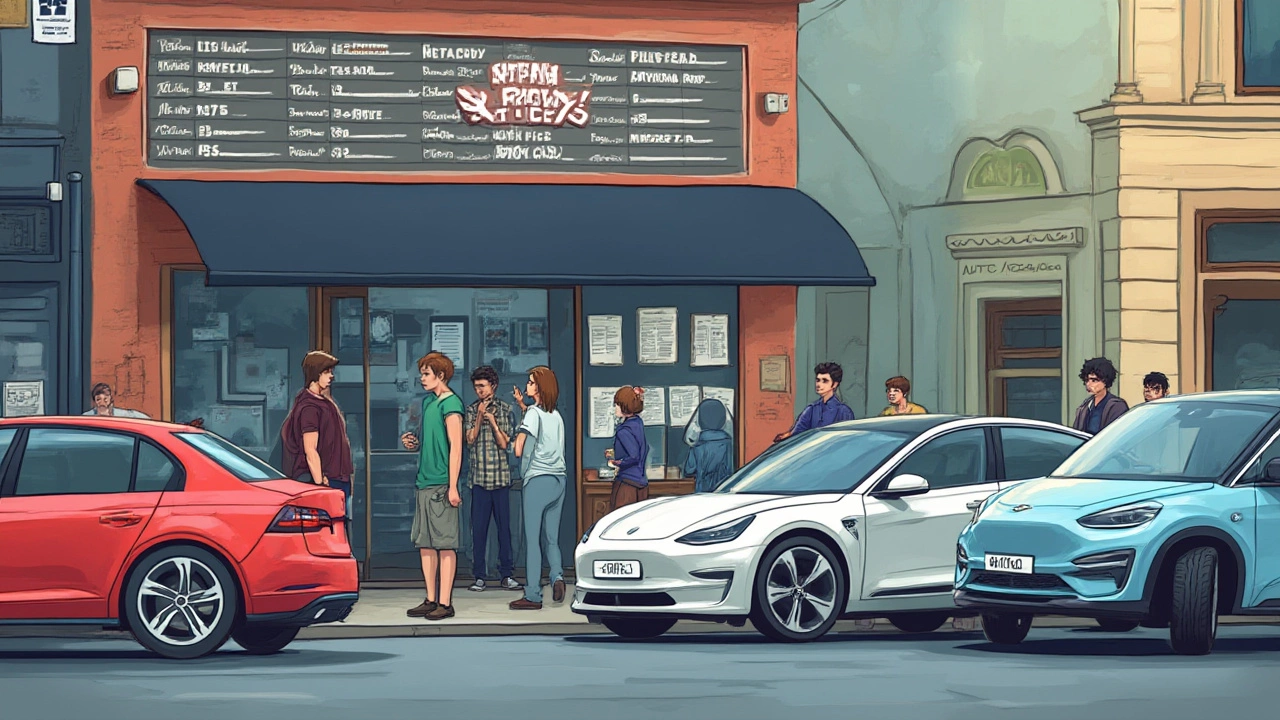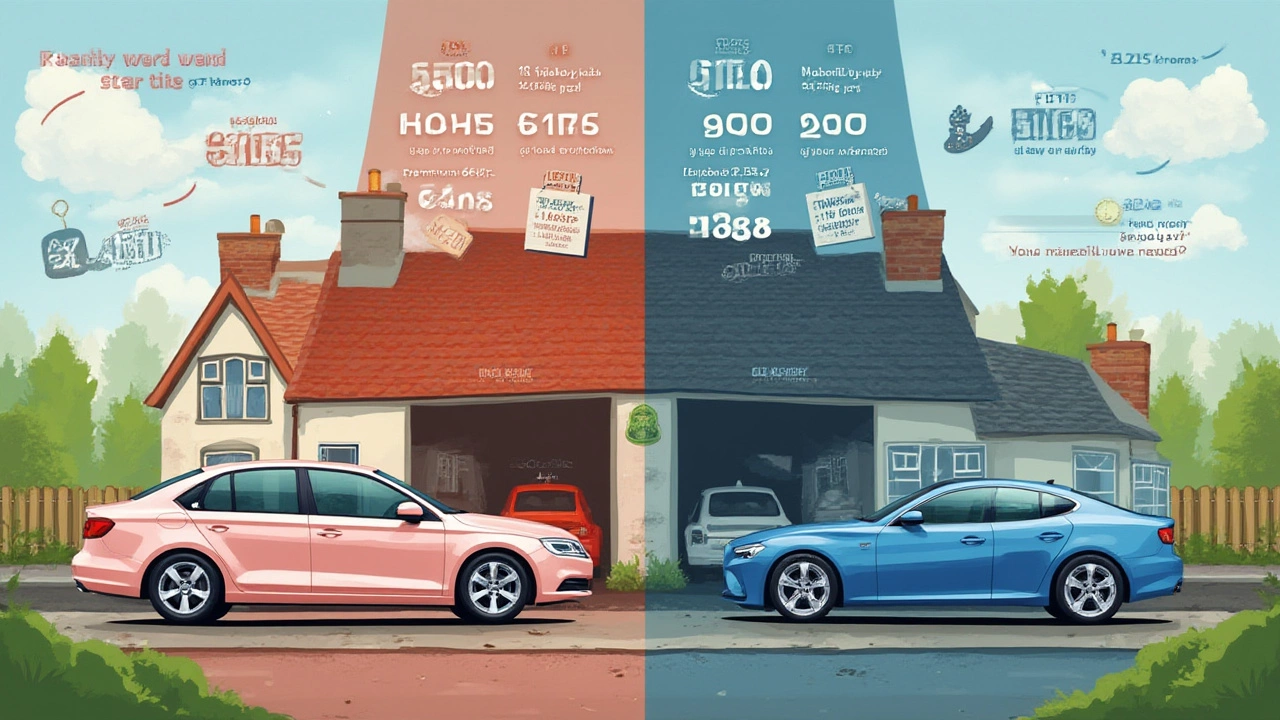Ever looked at your car’s dashboard, noticed that little brake warning light flick on, and felt your stomach drop? You’re not alone. Tons of drivers see brake pad replacement as one of those mysterious, wallet-draining repairs. Is it really hundreds of bucks each time? Or are shops just marking up the price hoping no one asks questions? Instead of tossing around vague numbers, let’s actually dig in to what it really costs—right now, in 2025—to just replace brake pads. It’s surprisingly more nuanced than most expect, and you might find you have a lot more control over the total bill than you thought.
Why You Can’t Ignore Worn Brake Pads
You might be shocked at how many crashes happen because someone gambled with their brakes. It’s honestly wild. Data from the Federal Highway Administration shows that faulty brakes play a part in around 22% of “mechanical failure” related accidents. When brake pads get too thin, your car literally loses its stopping power. That’s not just a safety lecture. It means when you need to slam the brakes in traffic, you risk your car taking a painfully long time to stop. Most new brake pads start out at 10 to 12mm thick. Once they’re down to about 3mm, it’s time for replacements. If you let it go longer, you could chew up your rotors and triple the repair cost in a snap.
Ignoring brake noise is like ignoring your smartphone dying at 5%. The screeching, whining, or grinding is a built-in warning—not just a random annoyance. Manufacturers literally design little tabs that squeal once the pad gets low. This is your cue to get them checked before you’re shelling out $800 for a full brake job. I once waited too long and ended up having to replace both pads and rotors after a long trip—definitely not the best use of my vacation fund.
On top of that, driving with worn pads is illegal in most states. You can get ticketed or even have your car declared unsafe. The fines range from $75 to $250 depending where you live. So if you’re trying to put off the job to save cash, you might end up spending more and risking your license. I’d say that’s reason enough to jump on it.
What Factors Decide Brake Pad Replacement Cost?
You walk into a repair shop, ask for a quick brake pad change, and the mechanic quotes you $400. “Why so much?” You wonder, thinking about that $80 pad set you saw online. There’s a reason the math never works out the way you’d hope. A bunch of factors are at play, and each can swing the bottom line way up—or keep it down.
- Vehicle Make and Model: You drive a Honda Civic? Pads are cheap. You drive a BMW X5 or a Tesla with regenerative brakes? Expect to pay premium. Some pads for luxury cars come with sensors built in or are only available in pricier compounds.
- Pad Material: Organic pads are easy on the wallet, but they wear out quicker. Semi-metallics are mid-range in price and handle heat well. Ceramic pads last longest and run clean, but they cost the most up front. In 2025, ceramic continues dominating cities thanks to longer life and less dust—though some race-car types go full-metallic for the stopping power.
- Labor Rates: Here’s a real pain point. Big-city repair shops charge anywhere from $120 to $200 per hour for labor, while smaller towns may be half that. The actual time for a basic pad swap? Usually 30-60 minutes per axle for an experienced tech, unless the car’s design is extra complicated.
- DIY or Shop? If you’re handy, you can get away cheap—pads for a standard sedan cost $40 to $120 for all four. Labor’s free if it’s your own sweat. Professional installs add $100-$250 per axle in most cases, but you get a warranty and peace of mind. Some national chains offer lifetime pad warranties, which saves you cash decades down the road.
- Location: Like everything else, your zip code matters. California repair costs are notorious, routinely 25-40% higher than prices in Atlanta, Cleveland, or Houston.
Brand also matters. Big names like Brembo, Akebono, or Wagner usually charge a premium. You can find pads from smaller brands for less, but sometimes the compound wears out shockingly fast or you get that dreaded squeal after two weeks. Ask your mechanic for their favorites—not what’s cheapest.

How Much Can You Expect to Spend in 2025?
Okay, let’s tackle the question that brought you here: What’s the real number for brake pad replacement today? I called three repair shops this week, checked online parts stores, and even glanced at what DIYers are paying on social media forums.
- Standard Sedans and Compacts: If you drive something like a Toyota Camry, Ford Focus, or Chevy Malibu, you’re looking at $125 to $200 per axle at a shop, parts and labor included. Pads alone run about $40-$80 a set.
- SUVs, Crossovers, Light Trucks: Replacement typically costs you $175–$300 per axle. Heavier vehicles wear pads faster, and thicker pads cost more. If you opt for ceramics, budget closer to the high end.
- Luxury or Performance Cars: It stings. Mercedes, BMW, Audi, and EVs like Teslas often need special-order pads. These can run $250–$500 per axle, sometimes even more if sensors or extra labor are needed.
- DIY Route: If you’re doing it yourself, you can replace pads on most non-premium vehicles for $50–$150 for a full set. You’ll need a jack, wrench, and maybe a C-clamp. Just don’t forget to torque everything or you could be in real hot water.
Don’t be tricked by shops quoting suspiciously low prices—sometimes that means they’ll "find" problems with rotors, hoses, or suggest a full brake job once you’re in the door. National chains like Midas or Pep Boys usually stick to posted pricing, and they can sometimes do basic pad swaps for around $150, especially if they’re running a promotion.
And should you replace all four at once? Not always. Most cars wear out their front pads faster since the front brakes do most of the work. Some SUVs with electronic parking brakes might need all four at once. Your mechanic should check before upselling you everything under the sun.
Sneaky Extra Costs You Might Not Expect
Budgeting just for pads can leave you blindsided. Brake jobs, like most repairs, have a way of going off-script. You show up for squeaky pads and leave with a higher bill, scratching your head. Here’s what sometimes adds a surprise cost:
- Damaged Rotors: If pads have worn down too much, the metal backing can scar the rotor surface. Some rotors can be resurfaced (for $30-$60 each), but thinner rotors must be replaced—often $80–$250 per pair.
- Brake Sensors: Many European models come with sensors that need replacing when you swap pads. Expect $15–$50 each.
- Caliper Service: If a caliper’s sticking, a shop might have to clean and lubricate or even rebuild them. Basic service is usually $25–$40 per wheel, but caliper replacement jumps to $80–$180 each.
- Brake Fluid Flush: Most manufacturers want it changed every 2-3 pad jobs. Shops might recommend it “while we’re in there.” Fluid and bleed runs $60–$110.
- Hardware Kits: Worth the extra $10–$20. New pins and shims cut down on noise and premature wear.
Shops may offer premium brake "packages" that toss in wiper blades, inspections, or rotor "turning.” If you just want pads, say so up front. But sometimes that package pricing does work out cheaper, especially mid-summer when promotions pile up to boost sales.
If you ever get quoted more than $300 for pads alone (for standard cars), it’s smart to ask for a full breakdown. I’ve had times where asking just one simple question dropped my estimate by 40 bucks. Mechanics respect a customer who’s willing to have a real conversation.

Ways to Save Money—And Still Stay Safe
No shame in hunting for a deal. Brake pad swaps aren’t always dirt cheap, but there are ways to knock down the bill and keep your car solid on the road. Here’s how to trim some fat off your next brake job:
- Shop Around: Get estimates from 2-3 shops for the same work. You’d be amazed, sometimes the exact same pads and labor can swing $70 or more just based on zip code or a shop’s schedule.
- Ask About Price Matching: If you find a killer deal elsewhere, see if your regular garage will match or beat it. A lot of chains have published price-match guarantees.
- Opt for Quality Pads Up Front: Sure, ultra-budget pads look good on the receipt, but if you need another set a year later, did you really save anything? High-quality ceramics or quality semi-metallics often last twice as long. Ask about warranty, too—some pads get a "lifetime replacement" promise.
- Skip the Dealer (Unless You Have to): Dealership shops charge up to 30% more, especially on older cars out of warranty. Independent mechanics almost always offer better value—without voiding your warranty.
- DIY If You're Handy: If you’ve ever swapped a tire, you can probably handle pads with two hours and a good YouTube video. Just double-check torque specs and test drive slowly the first day.
- Combine Services: If you’re due for an oil change, tire rotation, or state inspection, bundle the jobs and see if they’ll drop $20-$30 from your total. Shops value efficiency just like you do.
- Befriend Your Mechanic: Loyalty counts. My guy knows my car and throws in little extras (like a free brake inspection) because I never nickel-and-dime him. Relationships matter, even in auto repair.
One last favorite tip: Don’t be afraid to ask what brand of pads a shop uses. Some national chains source good quality, but smaller garages might cut corners if you don’t ask. If you care about low dust, whisper-quiet, or high performance, they’ll usually have a few options—and sometimes a surprising deal on leftovers from another job. That little bit of hassle now means less trouble (and cleaner wheels) later.
If you’re dealing with teens or younger drivers in the house, spend the extra for ceramics. I did this for my daughter’s Corolla, and it basically halved the dust on her wheels and saved explaining why she needed brakes again six months into college.
|
So, the next time you hear a squeal or spot that red brake light, don’t panic. Replacing brake pads isn’t the mysterious bank account killer everyone thinks it is. Understanding where costs come from—and how to spot the upsell—will keep you safe, your car reliable, and your wallet mostly intact.


